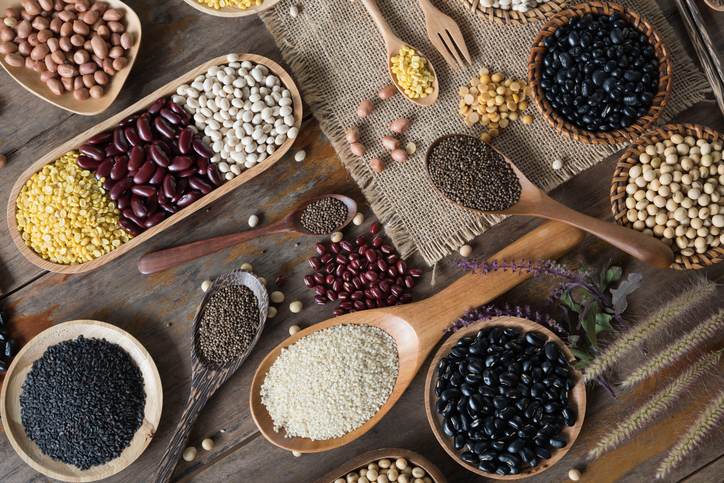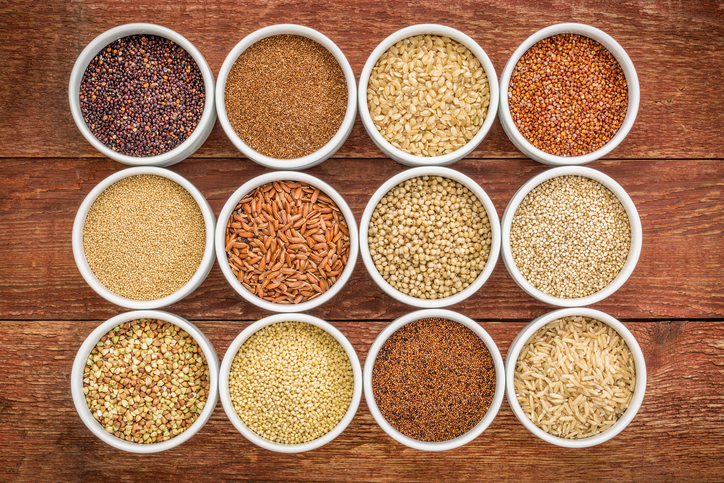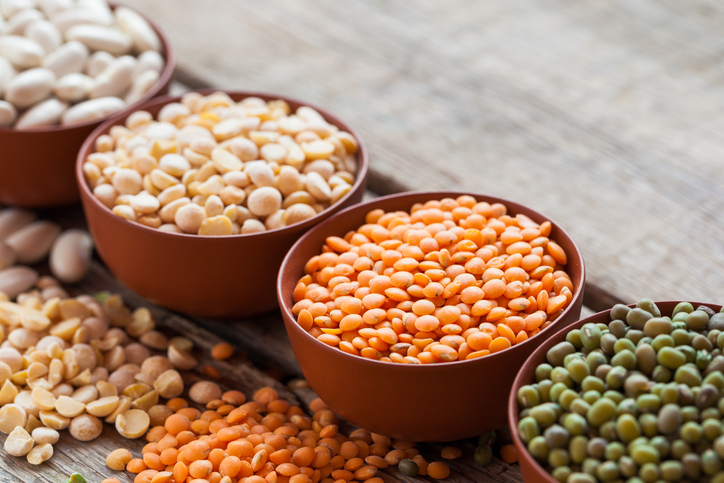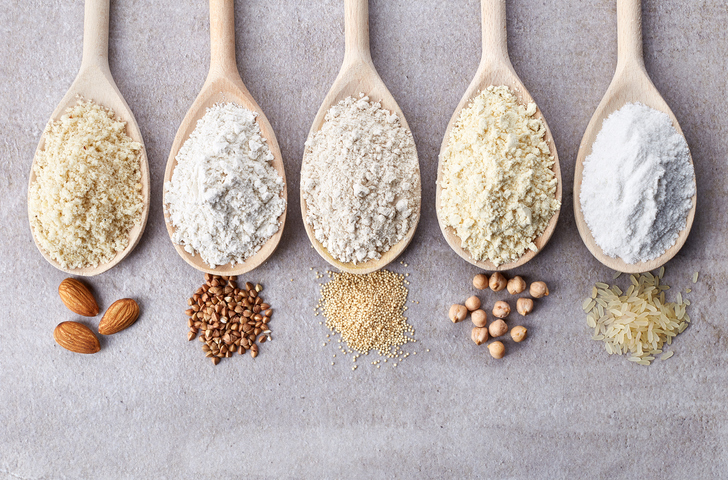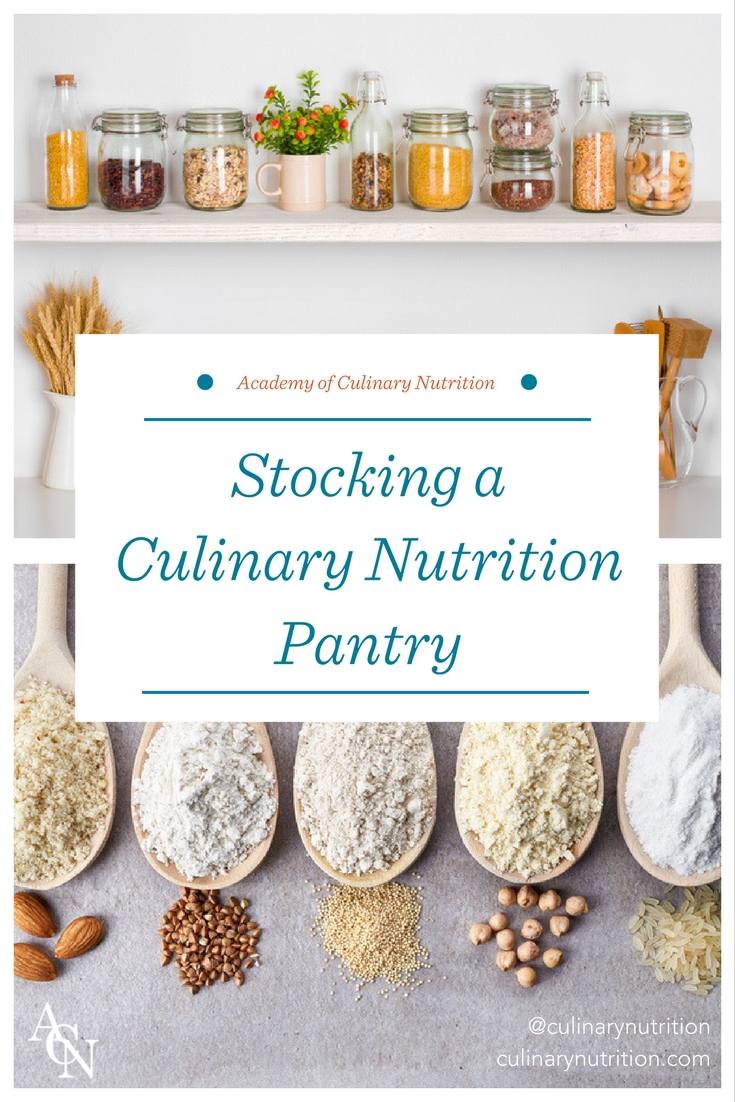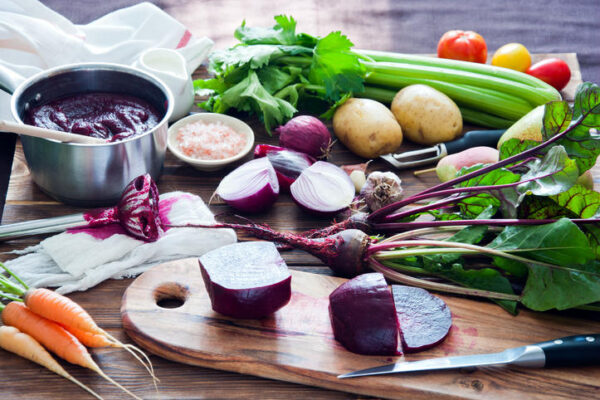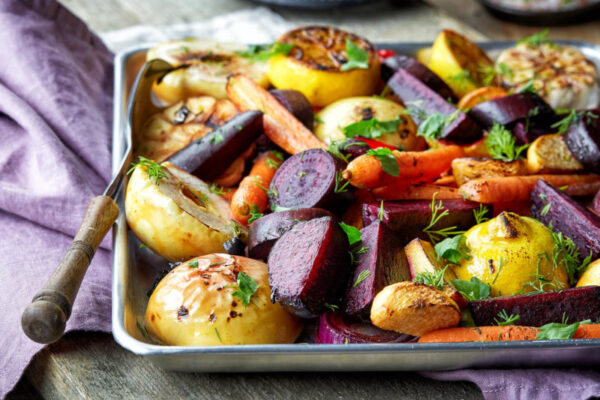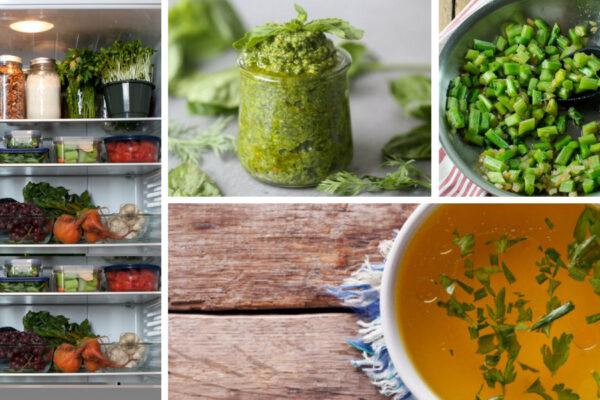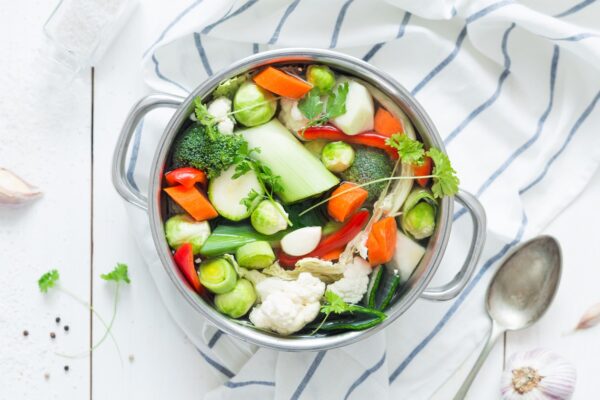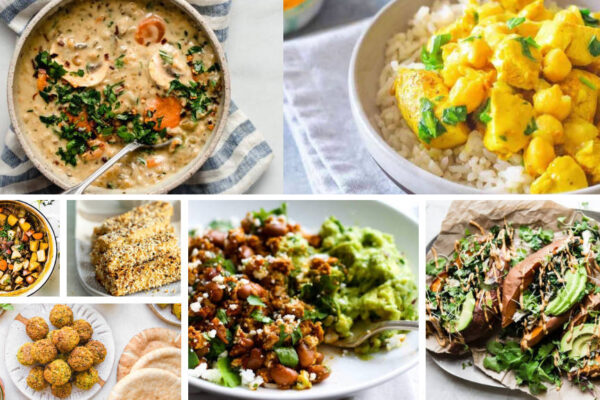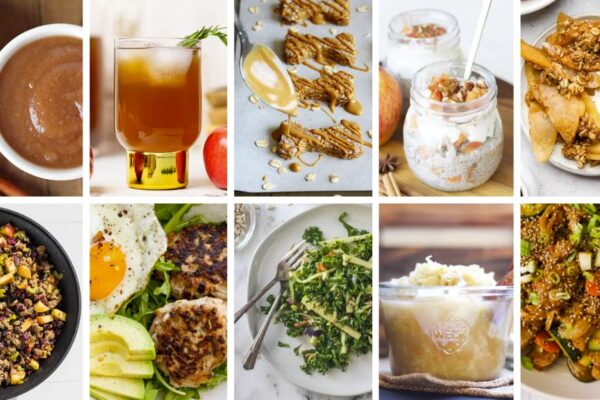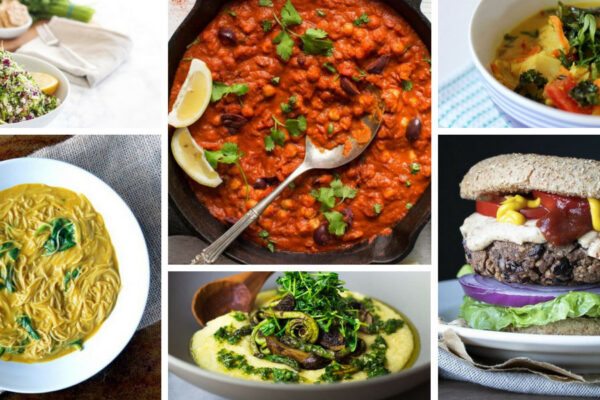Stocking a Culinary Nutrition Pantry

As you might imagine, we adore cooking from scratch here at the Academy of Culinary Nutrition. Batch cooking, cooking cooperatives, recipe-free dinner bowls – we’re always willing to put our knives to work and create interesting, flavourful and health-supportive food. If this sounds complicated to you, we’re about to share a major secret: cooking from scratch is a whole lot easier, quicker and less stressful when you’ve got a well-equipped pantry. That’s why we’re sharing how to fully stock a culinary nutrition pantry.
Benefits to Stocking a Culinary Nutrition Pantry:
- You’re more likely to cook meals at home because you don’t have to visit the grocery store for ingredients.
- You’ll save money, as you won’t resort to takeout or restaurants.
- You can pull meals together quickly and easily.
- You can complement your pantry ingredients with fresh, seasonal produce and herbs from your local market. That way, you’ll never get bored with the same ingredients.
- You’ll experience the joy of saying, ‘I have everything to make that!’ when you spy a heavenly-looking recipe on Pinterest.
- You’ll be ready in the event of a natural disaster or zombie apocalypse.
How to Get Started on Stocking a Culinary Nutrition Pantry
Does the idea of building a pantry send you into a panic? It doesn’t have to be scary with these basic tips.
- Begin slowly. Remember, you don’t need to pick everything up at once. Start off by picking one pantry category – nuts, seeds, grains, flours, oils, spices, etc. and then move on to the next one as you stock.
- Choose the ingredients you love to use. Rosemary is amazing, but if you can’t stand the smell of it then don’t feel pressured to buy it. The best ingredients to have in the kitchen are the ones you enjoy using. Don’t let ingredients go stale by hanging out in your pantry for two years – save yourself the food waste by purchasing the things you enjoy.
- Take a look at your menu plans, grocery lists and receipts. Are there certain items that you buy all the time for your favourite recipes? These are the ingredients that you need to buy first, or in large amounts, for your pantry.
- When trying something new, buy in small amounts. While it’s important to cook with the foods you love, it’s also fun to try new things. However, don’t buy a 3 pound bag of chickpea pasta if you don’t know if you’ll like it. Begin with a small amount, then take advantage of sales or bulk buying once you know whether it’s something you and your family enjoy eating.
- Ask for family input. If you live with family members or roommates, ask them what their favourite flavours and ingredients are. This will help shape your pantry into a resource that everyone can use and to create meals that will satisfy picky eaters.
- Get the right storage equipment. If you’re stocking a culinary nutrition pantry, you want to ensure it’s built to last. No one wants to open a rancid bag of almonds! We like using glass containers or mason jars to store our pantry ingredients. We also recommend buying labels or masking tape so you can organize everything clearly. There are also chalkboard labels or paint you can purchase, which is helpful if you’re switching things around and want to easily change up the label.
- Use the kitchen space you have. You don’t need a gigantic walk-in space to create a well-stocked pantry. Pantry shopping doesn’t equal bulk shopping – you can easily create a pantry that has everything you need in small spaces. You just may need to replenish more often, but you will still reap the benefits.
- Keep health in mind. We love dairy-free chocolate as much as you do, we promise. But if having a large bag of dark chocolate chips in your pantry will lead to you shoveling handfuls into your mouth at 11pm, then perhaps that isn’t the best choice. We aim to stock our pantry with nutrient-dense ingredients that support our health. When stocking your pantry, consider your choices and whether a particular ingredient will enhance your health, or detract from it.
Get your FREE Pantry Staples Shopping List plus 35 more free resource guides!
Fill out the form below for instant access.
Free Resource Library
Enjoy more than 40 downloadable guides, recipes, and resources.
Culinary Nutrition Pantry Essentials
While everyone’s pantry is unique, we want to share our basic pantry essentials to get you started. Build on this list, edit it and make it your own!
Grains
- Buckwheat
- Quinoa
- Brown rice
- Millet
- Gluten-free oats
Storage Tips: If buying in bulk amounts, store some grains in a glass jar and the rest in the fridge or freezer. Grains contain oils too, and this saves them from rancidity.
Beans + Legumes
We like using dried beans, as they are often cheaper than canned. If using canned beans, aim for ones that are BPA-free.
- Chickpeas
- Black beans
- Kidney beans
- Lentils (red, green, or black)
- Mung beans
- Navy beans
Storage Tips: Beans and legumes keep well when stored in a sealed container. If your beans are taking a longer time to cook than normal, they are probably stale.
Nuts
- Almonds
- Cashews
- Walnuts
- Pecans
Storage Tips: We like to store nuts and seeds in the fridge. If you eat them on a daily basis, keep a small jar out on the counter for snacking, salads, smoothies, etc.
Seeds
- Flax seeds
- Chia seeds
- Sunflower seeds
- Hemp seeds
- Pumpkin seeds
Storage Tips: See the nuts section above.
Flours
- Brown rice flour
- Buckwheat flour
- Chickpea flour
- Sorghum flour
- Millet flour
- Arrowroot flour
Gluten-Free Flour Tips: Get your guide to using gluten-free flours here. As with grains and nuts, store any excess you won’t use for a couple of months in the fridge or freezer.
Fats + Oils
- Coconut oil
- Olive oil
- Avocado oil
- Hemp oil
- Flax oil
- Sesame oil
- Ghee
Storage Tips: Store in a dark glass container. Delicate oils like flax, hemp and chia should be stored in the fridge. You can also discover the best oils for cooking here.
Dried Herbs and Spices
This section will be very specific to your tastes, but here are a few to begin with:
- Sea salt
- Pepper
- Cumin
- Coriander
- Basil
- Curry powder
- Ginger
- Fennel
- Oregano
- Cinnamon
- Thyme
- Turmeric
Storage Tips: Buy small containers of spices and seal them well, as herbs and spices are potent and can lose their odour when sitting around for awhile. We also like to buy non-irradiated spices.
Canned or Jarred Goods
When possible, we like to buy pantry items in jars so we don’t have to worry about BPA. If buying canned goods, choose BPA-free options.
- Tomatoes
- Coconut milk
- Salmon
- Sardines
- Anchovies
- Pumpkin
- Butternut squash
- Applesauce
- Tomato paste
Other Miscellaneous Items
- Gluten-free pasta
- Raw honey
- Maple syrup
- Cacao nibs
- Shredded coconut
- Rice noodles + rice paper wraps
- Curry paste
- Apple cider vinegar (it can be used in 20 different ways)
- Rice vinegar
- Balsamic vinegar
- Cacao powder
- Unsweetened dried fruit (raisins, dates, cranberries, etc.)
Recipes Using Culinary Nutrition Pantry Staples
Pantry ingredients can be prepared in a lengthy number of combinations! Here are a few great recipes you can make with these culinary nutrition pantry items.
- How to Make Nut Milk
- 8 Packaged Staple Foods You Can Make From Scratch
- Choose Your Own Adventure Gluten-Free Granola
- 12 Homemade Condiments You’ll Never Need to Buy Again
- Grain-Free Flax Crackers
- Apple Cinnamon Overnight Oats
- Grain-Free Almond Flour Cookies
- Quinoa, Bean + Lentil Salad
- Baked Green Curry Falafels
What did we miss? What do you always have in your pantry?
Free Resource Library
Enjoy more than 40 downloadable guides, recipes, and resources.















